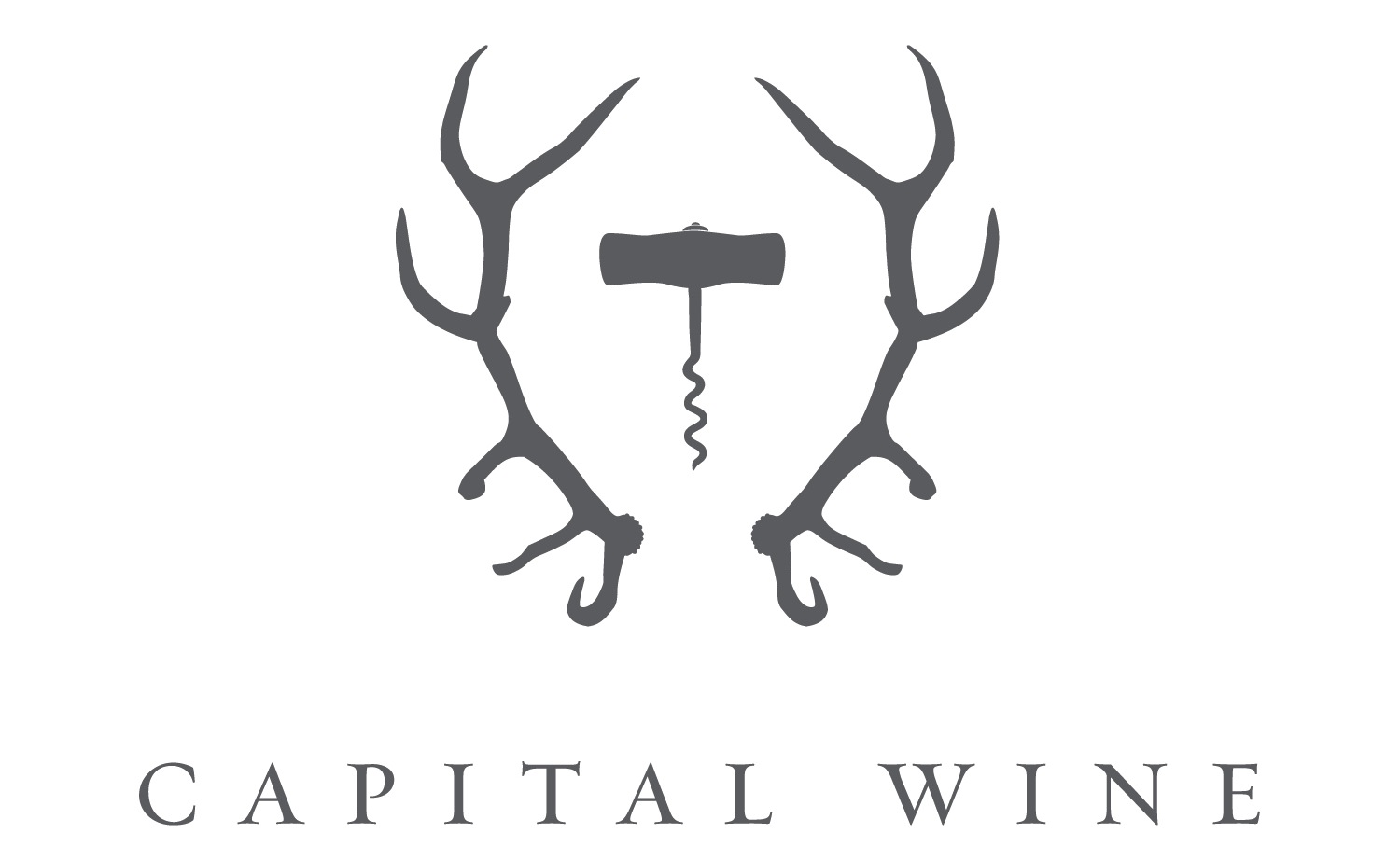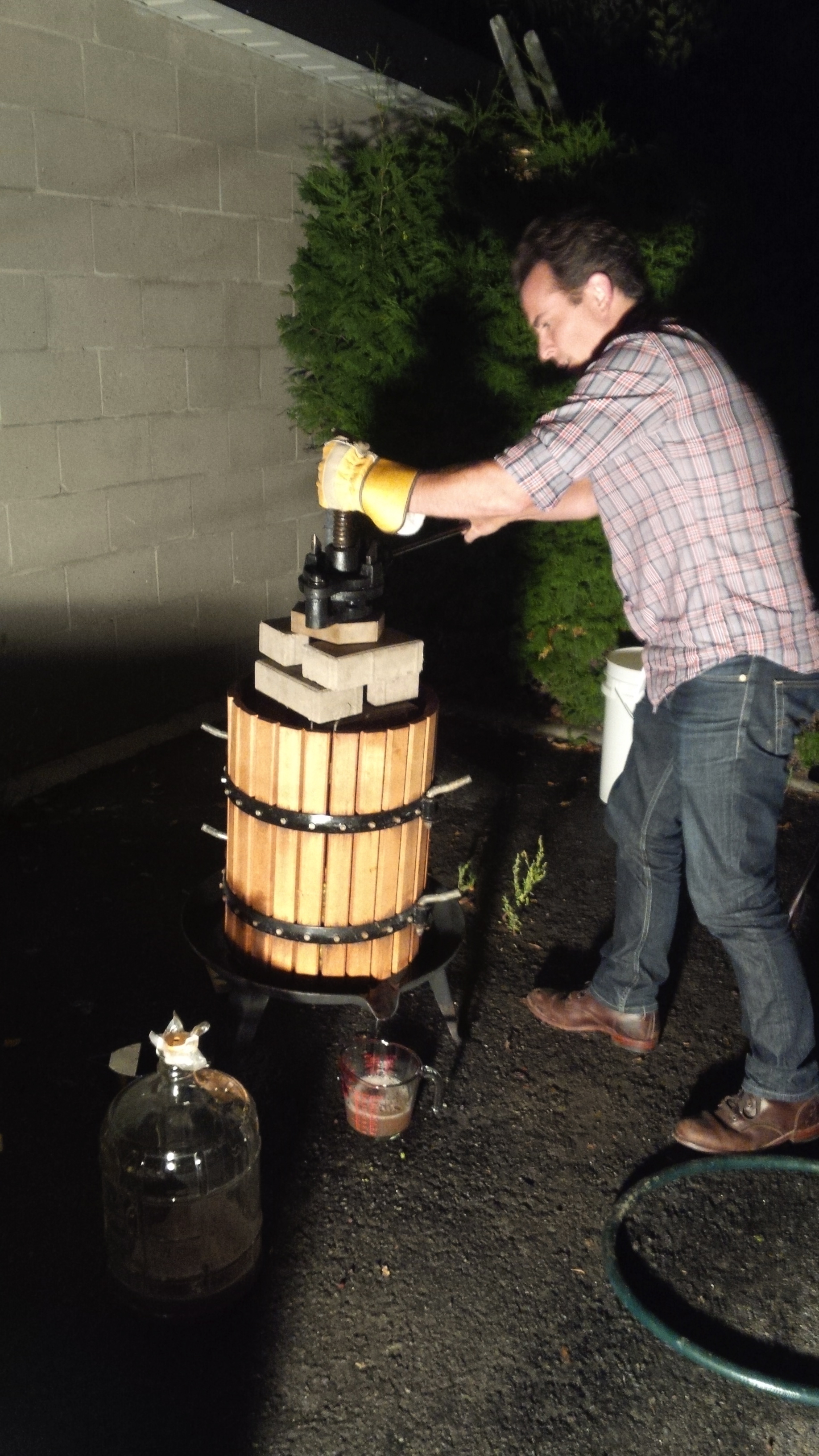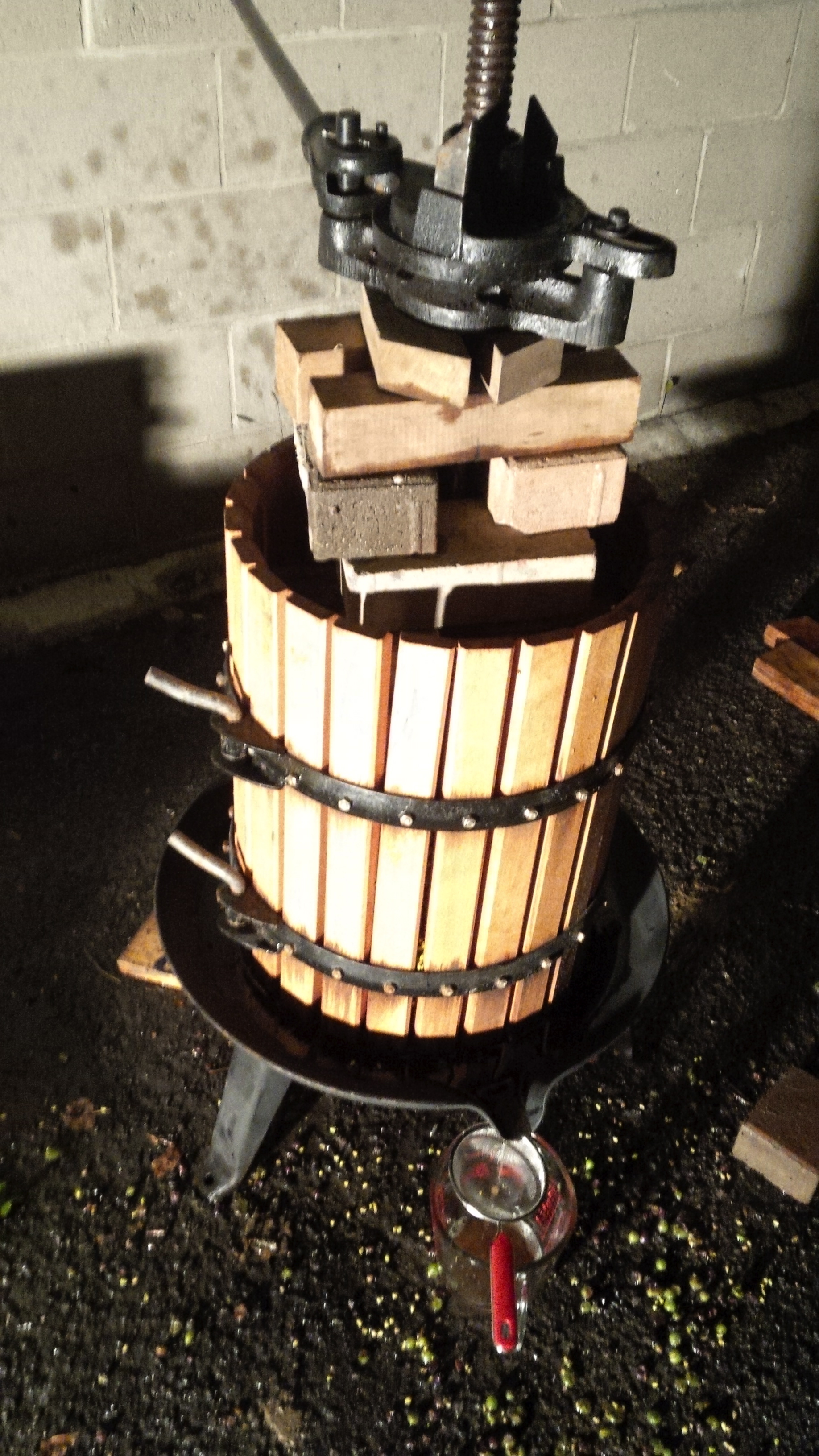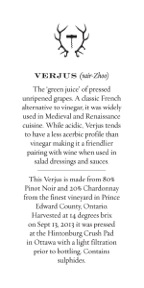Introducing Capital Provisions Verjus
PLEASE NOTE: For all the people reaching out asking for how to buy this verjus, this post is from 2014 and I haven’t made verjus in several years, with no plans to make anymore in the near future. Sorry for the inconvenience!
————-
As an irrecoverable cookbook addict, I've seen over several years increased calls for verjus in recipes where you'd often see white wine vinegar used--salad dressings, sauces, de-glazing, etc. But it was surprisingly difficult to find any verjus for sale anywhere. Having scoured Ottawa's fine food shops to no avail, and even failing in Toronto at Whole Foods, Pusateri's, etc. I decided I'd make my own.
For those that don't know, verjus (or verjuice) is simply "green juice", the acidic unripe juice of grapes, pressed before they reach maturity. Historically it was a staple of classic French cuisine dating back to Medieval times and into the Renaissance. Part of its appeal is that although it is often used interchangeably with white wine vinegar, it is less acerbic and pairs better with wine. Vinegar can often clash with wine in food pairings.
An inherited part of the lush vegetable garden we planted this year, was a row of grapes (unidentified variety) that were planted by the former owner. Considering the void of verjus in our marketplace, and since we were already growing and canning a garden full of vegetables it only made sense to do the same with our grapes. So I purchased a basket press, car boys, filtering and bottling equipment to make some verjus in Ottawa. The back alley behind our standalone garage and garden was transformed into The Hintonburg Crush Pad. I borrowed a refractometer from Norman Hardie to measure the brix level on the grapes, seeing where their sugar levels were at in order to pick at optimal under-ripeness.
It turns out even at an unripe level I had competition for the grapes. In Price Edward County they compete with the birds, in Hintonburg we compete with the squirrels. By the time the grapes were reaching 12 and 13 degrees brix (a sugar level of roughly half that of ripe grapes) squirrels were quickly making off with the grape clusters. What I had left to press only yielded six 375ml bottles and has come to be known as the smaller batch "Estate" Verjus.
Since I had invested in all this winemaking equipment I could not rest with only 2.25 L of verjus. I called up Norman Hardie in Prince Edward County (whose wine I represent in Eastern Ontario) and asked if I could come help thin clusters they were cropping to decrease yields. Vineyards often thin a certain amount of unripe clusters from the vines in order to increase the ratio of photosynthesis and ripening to the remaining clusters. This extra energy helps increase their ripeness and concentration. As common practice the unripe clusters are cut and just dropped to the ground. So I went in to help with the thinning and collected myself an SUV full of Pinot Noir and Chardonnay and headed back to Ottawa.
That evening I called up a few friends, and with the help of some Bourbon and a few beers we set to work crushing grapes into the early hours of the morning. Here's some pictures of the verjus process:
While our efforts only yielded forty five 375ml bottles in our first vintage, it was an outstanding learning process and we're gearing up for a bigger and better vintage next year. Unfortunately our small first vintage has already sold out, but you may see it on the menu of some of Ottawa's top restaurants in the meantime. Please submit a request if you'd like to be put on the waiting list for some verjus next year. Pricing and availability to come.
Tasting note: Our 2013 County Verjus is clear, pale lemon colour with a slight effervescence from a minute amount of fermentation. On the nose it has aromas of citrus fruit, ripe pears, fresh grape juice and wet stone. The palate is lightly sparkling up front, with a bracing acidity throughout with notes of lemon, lime and green apple. A wonderful substitute for vinegar in salad dressings, vinaigrettes and sauces that will be accompanied with wine pairings. Also great for deglazing pans and ingredient in basting roasted meats.
80% Pinot Noir 20% Chardonnay from Prince Edward County, harvested at 14 degrees brix on September 13, 2013. Pressed and bottled onsite in Ottawa at The Hintonburg Crush Pad. Contains sulphides.













